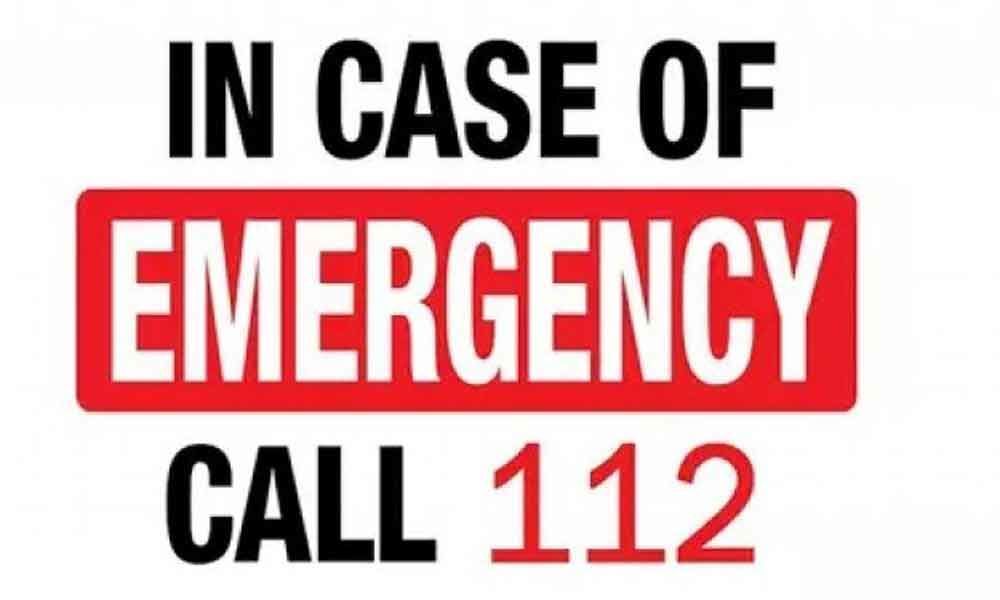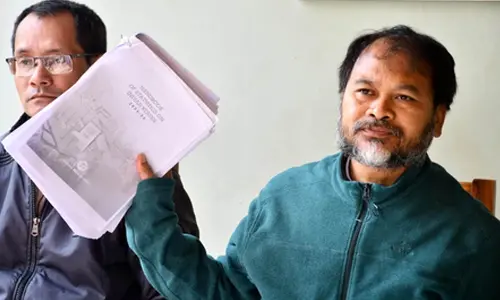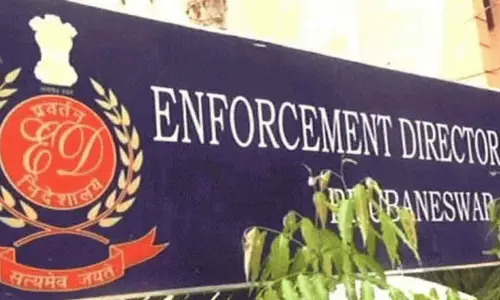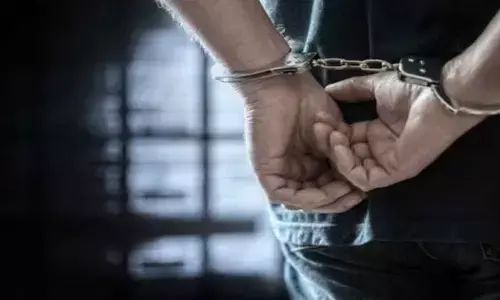Emergency no.112 for all distress calls
 Emergency no.112 for all distress calls
Emergency no.112 for all distress callsThe country's single emergency helpline number, 112 on which immediate assistance can be sought by anyone in distress, which is similar to 911 of the US, was launched recently by the Union government.
The country's single emergency helpline number, 112 on which immediate assistance can be sought by anyone in distress, which is similar to 911 of the US, was launched recently by the Union government.
The latest '112' helpline is an integration of police (100), fire (101) and women (1090) helpline numbers, and the project is being implemented under the central government's Nirbhaya Fund.
Many countries in Europe and several other countries in other parts of the world also use 112 as their emergency number. The number 112 is part of the so-called GSM standard. GSM is the dominant mobile telephone platform in many parts of the world including India and all GSM phones can call 112 even when locked.
Now, the Emergency Response Support System (ERSS) is a Pan-India single number (112) to target all types of emergencies. People in distress will have to call the single number for availing of the services of the police, ambulance and the Fire Department.
The service was rolled out in 20 states and UTs including Himachal Pradesh, Andhra Pradesh, Uttarakhand, Punjab, Kerala, Madhya Pradesh, Rajasthan, Uttar Pradesh, Telangana, Tamil Nadu, Gujarat, Puducherry, Lakshadweep, Andaman and Nicobar Islands, Dadar and Nagar Haveli, Daman and Diu, Jammu and Kashmir and Nagaland, and the rescue teams of each State are managed to reach out to every person in distress within five to seven minutes of receiving their call.
To address distress calls, the operators gauge information shared by the respective state governments, including data of their medical, police, ambulance, and disaster management departments. Each State/ UT has a dedicated centralised monitoring and caller reception team, which operates from the state capital.
The State Emergency Response Centre (ERCs) can receive panic signal via voice call to '112,' email requests on website or the '112' mobile app. The location-based tracking of the victim can be done through location-based services of all phones or even more accurately through GPS for smart phones.
In case of a normal phone, a long press of the '5' or '9' key will activate the panic call. The mobile app for 112 can be downloaded freely from Google Play Store and Apple Store. After installing app, the people can log onto the ERSS website for the respective state and send an emergency email or SOS alert to the state Emergency Response Centre.
The Nirbhaya Fund was set up by the central government for this Emergency Response Support System, of which Rs 278.66 crore has already been released to the States and the UTs from the Nirbhaya Fund. The government also earmarked Rs 78.76 crore for a special project under the Nirbhaya Fund for strengthening DNA analysis capacities in the state forensic science laboratories of selected states.
The ERSS can also have the Investigation Tracking System for Sexual Offences (ITSSO) and the safe city implementation monitoring portal will instill a sense of security in women in metro cities. It leverages the existing CCTNS data base, which covers nearly 15000 police stations in the country.
At present, 8 cities namely, Ahmedabad, Bengaluru, Chennai, Delhi, Hyderabad, Kolkata, Lucknow, and Mumbai have been identified in the 1st phase for implementation of safe city projects, which are funded under Nirbhaya Fund scheme at a cost of Rs 2,919 crore.
The country's single emergency helpline number, 112 on which immediate assistance can be sought by anyone in distress, which is similar to 911 of the US, was launched recently by the Union government. The latest '112' helpline is an integration of police (100), fire (101) and women (1090) helpline numbers, and the project is being implemented under the central government's Nirbhaya Fund.
Many countries in Europe and several other countries in other parts of the world also use 112 as their emergency number. The number 112 is part of the so-called GSM standard. GSM is the dominant mobile telephone platform in many parts of the world including India and all GSM phones can call 112 even when locked.
Now, the Emergency Response Support System (ERSS) is a Pan-India single number (112) to target all types of emergencies. People in distress will have to call the single number for availing of the services of the police, ambulance and the Fire Department.
The service was rolled out in 20 states and UTs including Himachal Pradesh, Andhra Pradesh, Uttarakhand, Punjab, Kerala, Madhya Pradesh, Rajasthan, Uttar Pradesh, Telangana, Tamil Nadu, Gujarat, Puducherry, Lakshadweep, Andaman and Nicobar Islands, Dadar and Nagar Haveli, Daman and Diu, Jammu and Kashmir and Nagaland, and the rescue teams of each State are managed to reach out to every person in distress within five to seven minutes of receiving their call.
To address distress calls, the operators gauge information shared by the respective state governments, including data of their medical, police, ambulance, and disaster management departments. Each State/ UT has a dedicated centralised monitoring and caller reception team, which operates from the state capital.
The State Emergency Response Centre (ERCs) can receive panic signal via voice call to '112,' email requests on website or the '112' mobile app. The location-based tracking of the victim can be done through location-based services of all phones or even more accurately through GPS for smart phones. In case of a normal phone, a long press of the '5' or '9' key will activate the panic call.
The mobile app for 112 can be downloaded freely from Google Play Store and Apple Store. After installing app, the people can log onto the ERSS website for the respective state and send an emergency email or SOS alert to the state Emergency Response Centre.
The Nirbhaya Fund was set up by the central government for this Emergency Response Support System, of which Rs 278.66 crore has already been released to the States and the UTs from the Nirbhaya Fund. The government also earmarked Rs 78.76 crore for a special project under the Nirbhaya Fund for strengthening DNA analysis capacities in the state forensic science laboratories of selected states.
The ERSS can also have the Investigation Tracking System for Sexual Offences (ITSSO) and the safe city implementation monitoring portal will instill a sense of security in women in metro cities. It leverages the existing CCTNS data base, which covers nearly 15000 police stations in the country.
At present, 8 cities namely, Ahmedabad, Bengaluru, Chennai, Delhi, Hyderabad, Kolkata, Lucknow, and Mumbai have been identified in the 1st phase for implementation of safe city projects, which are funded under Nirbhaya Fund scheme at a cost of Rs 2,919 crore.














